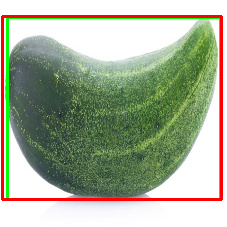1
2
3
4
5
6
7
8
9
10
11
12
13
14
15
16
17
18
19
20
21
22
23
24
25
26
27
28
29
30
31
32
33
34
35
36
37
38
39
40
41
42
43
44
45
46
47
48
49
50
51
52
53
54
55
56
57
58
59
60
61
62
63
64
65
66
67
68
69
70
71
72
73
74
75
76
77
78
79
80
81
82
83
84
85
86
87
88
89
90
91
92
93
94
95
96
97
98
99
100
101
102
103
104
105
106
107
108
109
110
111
112
113
114
115
116
117
118
119
120
121
122
123
124
125
126
127
128
129
130
131
132
133
134
135
136
137
138
139
140
141
142
143
144
145
146
147
148
149
150
151
152
153
154
155
156
157
158
159
160
161
162
163
164
165
166
167
168
169
170
171
172
173
174
175
176
177
178
179
180
181
182
183
184
185
186
187
188
189
190
191
192
193
194
195
196
197
198
199
200
201
202
203
204
205
206
207
208
209
210
211
212
213
214
215
216
217
218
219
220
221
222
223
224
225
226
227
| # -*- coding: utf-8 -*-
"""
@author: zj
@file: bounding.py
@time: 2020-01-15
"""
import os
import logging
import cv2
import numpy as np
import xmltodict
import torch
from torch.utils.data import Dataset
from torch.utils.data import DataLoader
import torch.nn as nn
import torch.optim as optim
import torch.nn.functional as F
import torchvision.transforms as transforms
from torchvision.models import alexnet
logging.basicConfig(format='%(asctime)s %(filename)s[line:%(lineno)d] %(levelname)s %(message)s', level=logging.DEBUG)
# LeNet-5
# input_dim = 32
# AlexNet
input_dim = 227
class LocationDataSet(Dataset):
def __init__(self, root_dir, train=True, transform=None, input_dim=1):
"""
自定义数据集类,加载定位数据集
1. 训练部分,加载编码前50图像和标记数据
2. 测试部分,加载编码50之后图像和标记数据
:param root_dir:
:param train:
:param transform:
"""
cates = ['cucumber', 'eggplant', 'mushroom']
class_binary_label = [[1, 0, 0], [0, 1, 0], [0, 0, 1]]
self.train = train
self.transform = transform
self.imgs = []
self.bboxes = []
self.classes = []
for cate_idx in range(3):
if self.train:
for i in range(1, 51):
img, bndbox, class_name = self._get_item(root_dir, cates[cate_idx], i)
bndbox = bndbox / input_dim
self.imgs.append(img)
self.bboxes.append(np.hstack((bndbox, class_binary_label[cate_idx])))
self.classes.append(class_name)
else:
for i in range(51, 61):
img, bndbox, class_name = self._get_item(root_dir, cates[cate_idx], i)
bndbox = bndbox / input_dim
self.imgs.append(img)
self.bboxes.append(np.hstack((bndbox, class_binary_label[cate_idx])))
self.classes.append(class_name)
def __getitem__(self, idx):
img = self.imgs[idx]
if self.transform:
sample = self.transform(img)
else:
sample = img
return sample, torch.Tensor(self.bboxes[idx]).float()
def __len__(self):
return len(self.imgs)
def _get_item(self, root_dir, cate, i):
img_path = os.path.join(root_dir, '%s_%d.jpg' % (cate, i))
img = cv2.imread(img_path)
xml_path = os.path.join(root_dir, '%s_%d.xml' % (cate, i))
x = xmltodict.parse(open(xml_path, 'rb'))
bndbox = x['annotation']['object']['bndbox']
bndbox = np.array(
[float(bndbox['xmin']), float(bndbox['ymin']), float(bndbox['xmax']), float(bndbox['ymax'])])
return img, bndbox, x['annotation']['object']['name']
def load_data():
transform = transforms.Compose([
transforms.ToPILImage(),
transforms.Resize(input_dim),
transforms.ToTensor(),
transforms.Normalize((0.5, 0.5, 0.5), (0.5, 0.5, 0.5))
])
root_dir = './data/image-localization-dataset/training_images/'
train_dataset = LocationDataSet(root_dir, train=True, transform=transform, input_dim=input_dim)
test_dataset = LocationDataSet(root_dir, train=False, transform=transform, input_dim=input_dim)
train_dataloader = DataLoader(train_dataset, batch_size=4, shuffle=True, num_workers=4)
test_dataloader = DataLoader(test_dataset, batch_size=4, shuffle=True, num_workers=4)
return train_dataloader, test_dataloader
class MSE_IoU(nn.Module):
def calculate_iou(self, target_boxes, pred_boxes):
# 计算重叠区域的左上角和右下角坐标
x_min = torch.max(target_boxes[:, 0], pred_boxes[:, 0])
y_min = torch.max(target_boxes[:, 1], pred_boxes[:, 1])
x_max = torch.min(target_boxes[:, 2], pred_boxes[:, 2])
y_max = torch.min(target_boxes[:, 3], pred_boxes[:, 3])
# 计算交集面积
intersection = torch.max(torch.zeros(x_max.shape).cuda(), x_max - x_min) \
* torch.max(torch.zeros(y_max.shape).cuda(), y_max - y_min)
# 计算两个边界框面积
boxAArea = (target_boxes[:, 2] - target_boxes[:, 0]) * (target_boxes[:, 3] - target_boxes[:, 1])
boxBArea = (pred_boxes[:, 2] - pred_boxes[:, 0]) * (pred_boxes[:, 3] - pred_boxes[:, 1])
iou = intersection / (boxAArea + boxBArea - intersection)
return iou
def forward(self, target_boxes, pred_boxes):
mseloss = nn.MSELoss().forward(target_boxes, pred_boxes)
iouloss = torch.mean(1 - self.calculate_iou(target_boxes, pred_boxes))
return mseloss + iouloss
class LeNet5(nn.Module):
def __init__(self, in_channels=1, num_classes=10):
super(LeNet5, self).__init__()
self.conv1 = nn.Conv2d(in_channels=in_channels, out_channels=6, kernel_size=5, stride=1, padding=0, bias=True)
self.conv2 = nn.Conv2d(in_channels=6, out_channels=16, kernel_size=5, stride=1, padding=0, bias=True)
self.conv3 = nn.Conv2d(in_channels=16, out_channels=120, kernel_size=5, stride=1, padding=0, bias=True)
self.pool = nn.MaxPool2d((2, 2), stride=2)
self.fc1 = nn.Linear(in_features=120, out_features=84, bias=True)
self.fc2 = nn.Linear(84, num_classes, bias=True)
def forward(self, input):
x = self.pool(F.relu(self.conv1(input)))
x = self.pool(F.relu(self.conv2(x)))
x = self.conv3(x)
x = x.view(-1, self.num_flat_features(x))
x = F.relu(self.fc1(x))
return self.fc2(x)
def num_flat_features(self, x):
size = x.size()[1:] # all dimensions except the batch dimension
num_features = 1
for s in size:
num_features *= s
return num_features
def compute_accuracy(loader, net, device):
total_accuracy = 0
num = 0
for item in loader:
data, labels = item
data = data.to(device)
labels = labels.to(device)
scores = net.forward(data)
predicted = torch.nn.functional.one_hot(torch.argmax(scores[:, 4:7], dim=1), num_classes=3)
total_accuracy += torch.mean((predicted == labels[:, 4:7]).float()).item()
num += 1
return total_accuracy / num
if __name__ == '__main__':
train_dataloader, test_dataloader = load_data()
device = "cuda:0" if torch.cuda.is_available() else "cpu"
num_classes = 7
# net = LeNet5(in_channels=3, num_classes=num_classes).to(device)
net = alexnet(num_classes=num_classes).to(device)
criterion = MSE_IoU().to(device)
# optimer = optim.Adam(net.parameters(), lr=1e-3)
optimer = optim.SGD(net.parameters(), lr=1e-3, momentum=0.9, nesterov=True)
logging.info("开始训练")
epoches = 100
for i in range(epoches):
num = 0
total_loss = 0
for j, item in enumerate(train_dataloader, 0):
data, labels = item
data = data.to(device)
labels = labels.to(device)
scores = net.forward(data)
loss = criterion.forward(scores, labels)
total_loss += loss.item()
optimer.zero_grad()
loss.backward()
optimer.step()
num += 1
avg_loss = total_loss / num
logging.info('epoch: %d loss: %.6f' % (i + 1, total_loss / num))
train_accuracy = compute_accuracy(train_dataloader, net, device)
test_accuracy = compute_accuracy(test_dataloader, net, device)
logging.info('train accuracy: %f test accuracy: %f' % (train_accuracy, test_accuracy))
# torch.save(net.state_dict(), './model/LeNet-5.pth')
torch.save(net.state_dict(), './model/AlexNet.pth')
img, label = test_dataloader.dataset.__getitem__(10)
img = img.unsqueeze(0).to(device)
print(img.shape)
print(label)
scores = net.forward(img)
print(scores)
|
